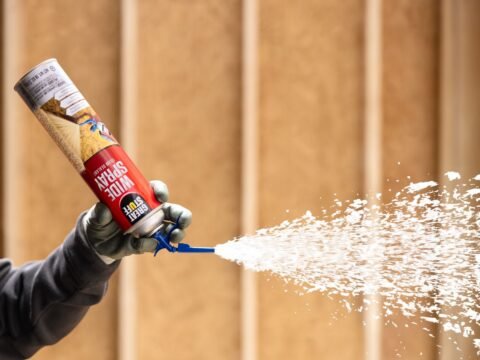
How to Properly Insulate Your Basement
February 16, 2023
Closed Cell or Open Cell Spray Foam Insulation: What Is the Best Choice for Your Home?
February 28, 2023Your attic can be a part of your home and provide significant energy savings. If you don’t have the right amount of attic insulation to hold the air inside your home that you’ve put into utility bills could as may be thrown out your window or, more specifically, to the roof.
Why It Is Essential to Insulate Your Attic
You might be wondering how an area predominantly used for storage can be crucial for your home’s energy efficiency. A properly insulated attic and adequate ventilation play a significant role in managing the temperature and quality of your living space throughout the year. Attic insulation is essential in keeping cool air inside your home during summer and warm air inside your home during winter.
How Attic Insulation Functions
If you notice that air is venting out of your attic, your HVAC system will have to operate for longer to cool or heat your house, which requires more energy. Adding additional or higher-quality attic insulation can help keep the air inside the house and prevent the cooling or heating system from running at the same time or frequency, which will save both energy and money, bringing down the cost of your utilities. Cost savings vary according to various variables, such as the resident’s behavior, whether or not you have an intelligent thermostat, and the heating and cooling system you’re using. On average, it’s thought that homeowners as 20% off their energy bills when they have the right amount of insulation in their attics. Whatever your location, the proper insulation of your attic can help reduce wear and tear on your cooling and heating system.
Different Types of Attic Insulation
After realizing the importance of insulating your attic, you might wonder which type of insulation is best for your house. Insulation gets measured by thermal resistance, which is also called R-Value. The higher the value, the more efficient the insulation. How much insulation you should consider for your house is determined by the area you live in; however, as a rule of thumb, homes in cold climates must have at least R-49 in the attic. Warmer temperatures require an R-38. The three most common kinds of attic insulation that are available:
- Roll-on insulation is the least expensive attic insulation as it’s pretty simple and quick for professionals to put in. It’s flexible, allowing it to fit comfortably between rafters, studs, etc. The snug fit helps to keep the air inside the house.
- Blown-in insulation is regarded as more effective due to the loose fill because it permits the insulation to fill in smaller crevices in which air can let out. The blown-in attic insulation is water-resistant, which can help prevent odors and mold from forming inside your home.
- It is not just that the spray foam insulation makes an airtight seal. It is the most efficient because it expands and closes any holes air can leak. Still, it also lasts longer than other kinds of attic insulation.
The Signs That Your Attic Insulation Is Needing Re-Insulation
- If you’re feeling drafts, they get emitted from somewhere, generally due to cracks or uneven air pressure. If you notice cold drafts through the home could be a clear indication that your attic needs an upgrade.
- The common perception is that the attic is an area that’s crowded and hot; however, the attic space can be susceptible to issues related to moisture. A damp attic may encourage the development of mildew and mold. As time passes, the insulation in your attic may wear out, cracks can form, or holes could create entry points for moisture to get in. If you observe any water loss in your wall or ceiling, it could indicate a breach in the insulation in your attic.
- Attic insulation can be an inviting habitat for rodents and other animals. If your attic needs emptying, it may be a target for rodents, bugs, and birds. These critters can build nests and live in old, outdated attic insulation, which is the ideal material for this purpose.
- The issue that’s most easy to spot is the high cost of energy. If your energy bills appear too high, they may indicate that your home’s heating system is working hard to compensate for the energy loss at a particular location in your home. Small leaks can lead to a slight increase in your bill, while more significant leaks could soon cost several hundred dollars.
- If you are experiencing strange temperature fluctuations across your home, the insulation isn’t adequate and needs to get replaced. An easy way to test is to open all windows and doors so the temperature can level out. Go through the house and look for areas with significantly warmer or colder temperatures.
How Often Should You Have Your Insulation Tested?
Many homeowners view their homes’ insulation as a once-and-done occasion. In ideal conditions, your insulation will last a hundred years and more; however, the insulation age is affected by changes. It gets recommended that you inspect your insulation every year at a minimum. If the insulation has gotten compressed, it might not be effective. If your roof gets forced to be replaced or repaired due to leaks, you must be sure that you inspect the attic insulation. If you need to have attic insulation installed or would like to have your current insulation examined, Call 613 Spray Foam at (613) 319-8422 or mail info@613sprayfoam.ca.




